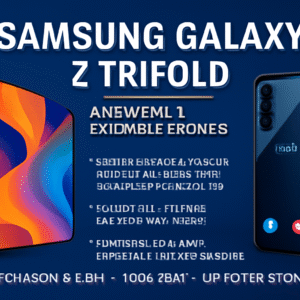Email has long been one of the most effective channels in business communication, but its traditional format is quickly becoming outdated. Static layouts and one-directional messaging no longer hold the attention of today’s decision-makers. Instead, interactive emails are transforming digital correspondence into dynamic, personalized experiences that foster stronger B2B Engagement.
Interactive emails allow recipients to engage directly within the content itself. Whether it’s through embedded videos, clickable elements, in-email forms, or surveys, the user becomes an active participant in the experience. This transformation marks a critical evolution in how businesses communicate with prospects, partners, and clients—creating a direct path to engagement without additional clicks or barriers.
Understanding the Power of Interactivity
The fundamental difference between traditional and interactive emails lies in user experience. Traditional emails rely on static information and external links to drive traffic elsewhere. Interactive emails, however, embed functionality and content directly within the message, making the experience seamless and immediate.
For example, a marketing manager receiving an email can view a product demo, respond to a quick poll, or download a resource—all without leaving their inbox. This simplicity reduces friction, improves participation rates, and drives measurable outcomes. More importantly, it shifts the focus from one-way communication to mutual exchange, which lies at the heart of modern B2B Engagement.
The Role of Personalization in Engagement
Personalization is one of the defining features of interactive emails. B2B audiences are highly diverse, with specific challenges, budgets, and goals. Through automation and data-driven insights, marketers can craft email content that adapts to the reader’s interests in real time.
Interactive emails can include dynamic sections that change based on factors like industry, location, or engagement history. A recipient in the technology sector, for instance, might see content highlighting AI solutions, while someone in manufacturing might receive insights into automation tools. This contextual personalization enhances relevance and builds trust—two essential pillars of strong B2B Engagement.
Behavioral Insights through Real-Time Interaction
Interactivity doesn’t just enhance the recipient experience; it also provides valuable behavioral data. Every action a recipient takes—whether it’s watching a video, completing a survey, or exploring a carousel—reveals intent. These engagement signals help marketers better understand where prospects are in the buying journey and how to guide them toward conversion.
With interactive emails, analytics go beyond open and click-through rates. Marketers can track micro-engagements like hover time, form submissions, and content preferences. This data, when integrated with CRM and automation platforms, enables smarter segmentation, predictive lead scoring, and timely follow-ups—all contributing to more intelligent and efficient B2B Engagement strategies.
The Technological Foundation Behind Interactive Emails
Advancements in coding technologies such as HTML5, CSS3, and AMP for Email have made interactivity possible at scale. These technologies enable embedded components that respond dynamically within email clients, allowing for a wide range of functionality—from collapsible menus to image sliders and real-time data updates.
However, technology alone is not enough. The success of interactive emails depends on thoughtful design and strategic execution. Elements must load quickly, remain visually balanced, and function seamlessly across devices and platforms. A carefully engineered email can significantly enhance engagement and create a premium brand perception in professional audiences.
Creating Emotional Resonance through Design
Beyond functionality, interactive emails tap into emotional engagement. B2B buyers, though analytical, are still influenced by design and experience. The tactile satisfaction of clicking, sliding, or watching creates a sensory connection that static messages simply cannot achieve.
For example, a visually rich email with a short embedded product video can capture attention more effectively than a paragraph of text. When brands create experiences that feel enjoyable, recipients associate those positive emotions with the brand itself. This emotional resonance is a subtle yet powerful driver of long-term B2B Engagement.
Practical Applications of Interactive Email Marketing
Interactive email marketing can be applied across multiple stages of the B2B funnel. Examples include:
-
Lead Nurturing: Embedding quick polls or preference selectors to tailor follow-up content.
-
Event Marketing: Allowing direct webinar registrations or session voting within the email.
-
Product Launches: Showcasing multiple product features through a carousel interface.
-
Customer Retention: Using satisfaction surveys or loyalty program interactions to sustain engagement.
-
Education Campaigns: Incorporating quizzes or assessments that reinforce learning and collect data.
Each of these applications allows businesses to engage audiences actively, making every message a step toward relationship-building and conversion.
Measuring Success and ROI in Interactive Campaigns
One of the strongest advantages of interactive emails is measurability. Marketers can track engagement depth, response quality, and conversion behavior with precision. These insights provide direct feedback on which components drive value and which require refinement.
Moreover, interactive campaigns tend to outperform traditional formats in metrics such as time-on-email, content interaction, and downstream conversion rates. By turning static communication into living experiences, interactive emails offer higher returns on investment and lower acquisition costs—key indicators of effective B2B Engagement.
Future Trends in Email Interactivity
The future of interactive emails lies in the integration of AI, machine learning, and predictive design. Imagine emails that auto-adjust based on a recipient’s time zone, reading habits, or recent web activity. These adaptive systems will enable brands to deliver hyper-personalized messages in real time.
As automation continues to evolve, interactive emails will merge seamlessly with other marketing channels—such as chatbots, social media, and personalized landing pages—to create a consistent, multi-touch experience. Businesses that invest in this evolution will set new benchmarks for B2B Engagement and customer retention.
Building Trust Through Innovation
In B2B marketing, trust and credibility are everything. Interactive emails, when used strategically, demonstrate innovation, transparency, and customer-centric thinking. They show that a brand values its audience’s time and attention by offering meaningful, enjoyable, and informative interactions.
By fostering engagement and providing instant value, interactive emails strengthen relationships, improve buyer confidence, and position businesses as forward-thinking leaders in their industries. They are not merely tools for communication—they are bridges that connect data, design, and human behavior in ways that redefine modern B2B Engagement.
About Us
Acceligize is a global B2B demand-generation and technology marketing firm specializing in performance-driven lead generation solutions. Their services include content syndication, account-based marketing, intent and install-based targeting, and custom campaign strategies. Leveraging data science, technology, and human intelligence, Acceligize helps clients reach high-quality audiences and drive conversions across the full marketing funnel.




